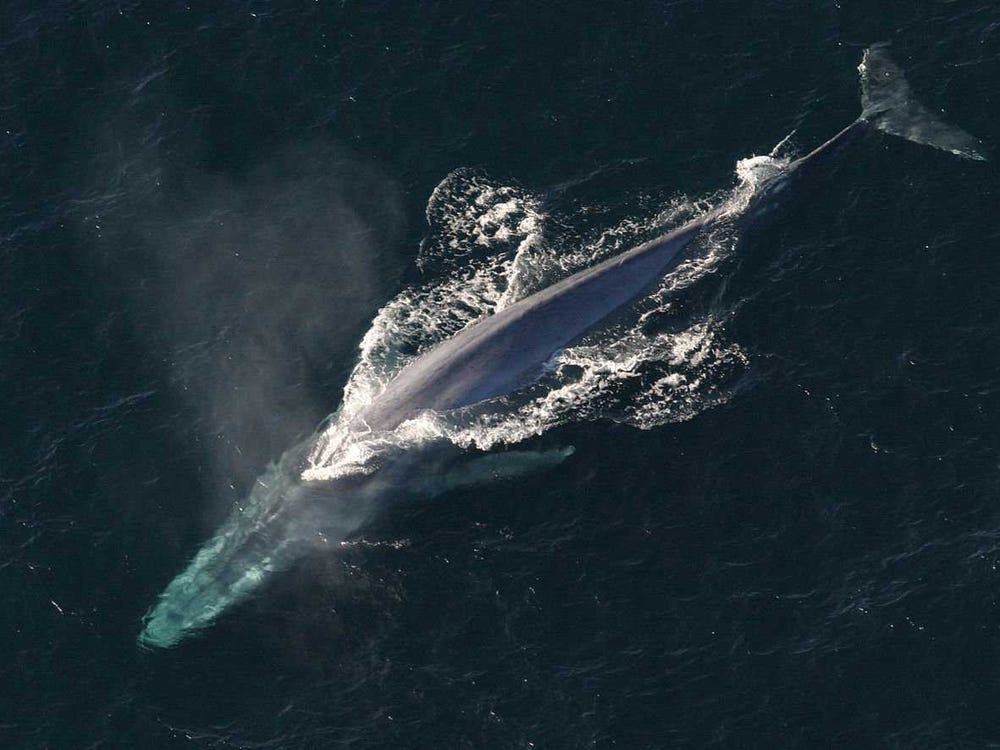First detected in 1989, the whale calls of the 52-Hertz whale confused the U.S. Navy as they thought the noise came from the Jezebel monster. When scientists got hold of the sound recordings, they determined that the sound came from a unique whale as the majestic creature vocalized much more than the normal range of blue or fin whales.
Known as the world’s loneliest whale, the 52-Hertz whale vocalized in a 50-52 Hertz range while bearing the signature calling of a blue and fin whale, making scientists theorize that the 52-Hertz whale was a hybrid of the two.
The Jezebel Monster or the Hybrid Whale?
During the Cold War in 1989, the U.S. Navy heard an unfamiliar sound coming from the network of hydrophones they deployed in numerous parts of the ocean floor to detect Soviet submarines. They attributed the series of unusual, low-frequency moans to the Jezebel monster, but in reality, the noise came from a whale. (Source: The Guardian)
In an article tackling the story of the world’s loneliest whale, filmmaker Joshua Zeman states that the technicians, who acted as ear witnesses, assumed that the strange sound indicated the presence of the military.
They thought it was a Chinese submarine for many years, and when the Berlin Wall fell, they turned the listening system over to scientists and said, “Well, you can use this.
Joshua Zeman
Not long after, Woods Hole Oceanographic Institution scientist William Watkins realized that the recordings contained a whale call. Watkins, including a group of other scientists, theorized that a unique whale produced the noise, a hybrid between a blue whale and a fin whale. The hydrophone network’s recording stood out to him as the whale was vocalizing at 52 Hertz while bearing the signature call of the blue and fin whales, despite the blue and fin whales having only a 15 to 30 Hertz range.
Due to the hybrid whale’s higher frequency, people speculate that other whales may hear the 52 Hertz call but wouldn’t understand it. Watkins and his team of experts continued to track the 52 Hertz whale for more than ten years, publishing a study about the underwater sound systems’ potential to trace individual whales. When their paper became widespread, people from all parts of the world empathized with the whale’s loneliness. (Source: The Guardian)
The Loneliest Whale Expedition
In the documentary The Loneliest Whale: The Search for 52 produced by Joshua Zeman, Zeman raised $400,000 to fund the search for the 52-Hertz whale. Many experts doubted the finding of the 52-Hertz whale as nobody has heard of the whale again in many years. The lack of detected activity of the whale led to most scientists presuming the 52-Hertz whale was dead.
Fortunately and unexpectedly, an intern found the whale while thoroughly studying their recordings. With the whale’s location detected near the shore off the west coast of the United States, the scientists worried about the abundance of noise from commercial ships as it prevented them from smoothly detecting the 52-Hertz whale.
Noise pollution continues to be a significant stressor for whales while simultaneously disrupting their ability to communicate. After shipping noises caused the attempt of the researchers to find the whale, the experts made a shocking discovery that one can only find out by watching Zeman’s The Loneliest Whale documentary. (Source: The Guardian)
